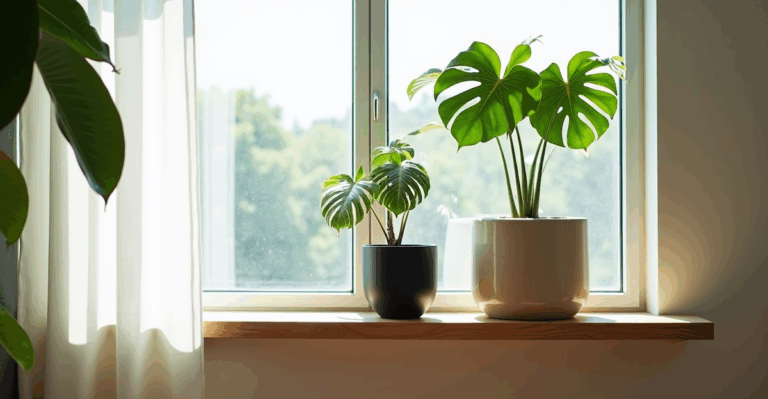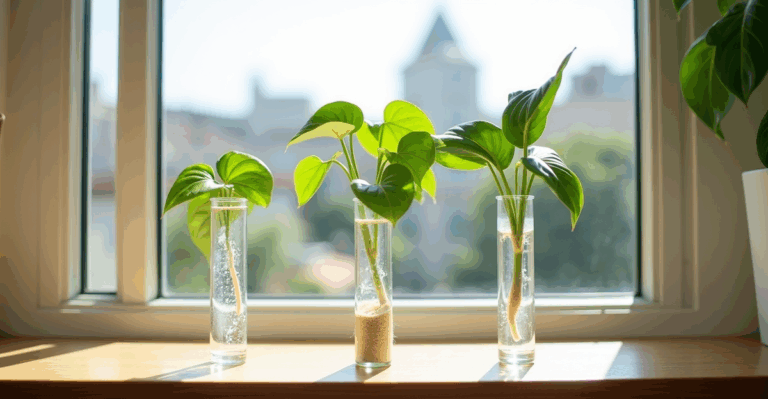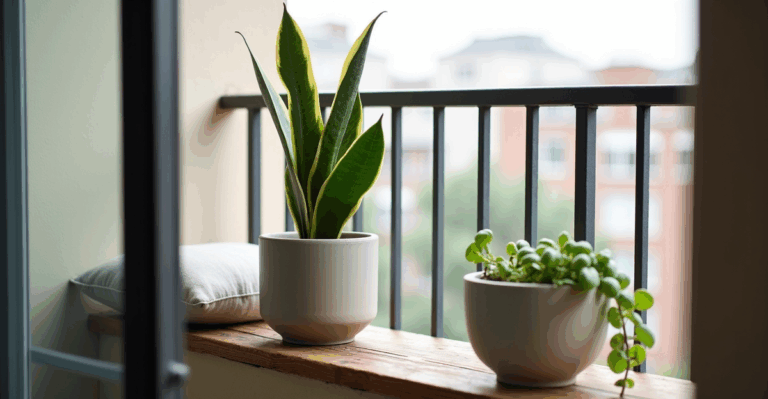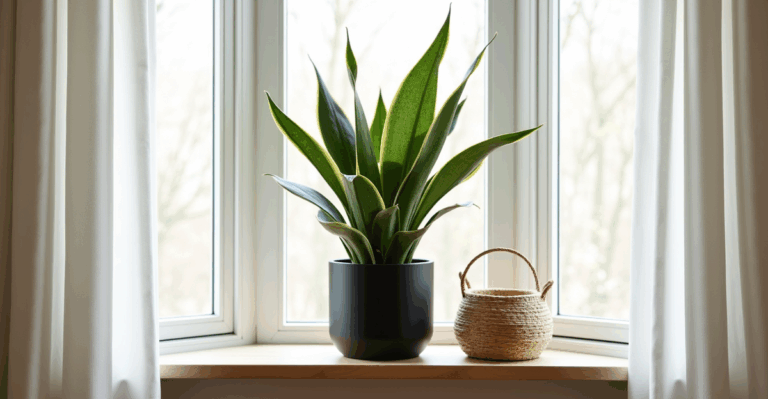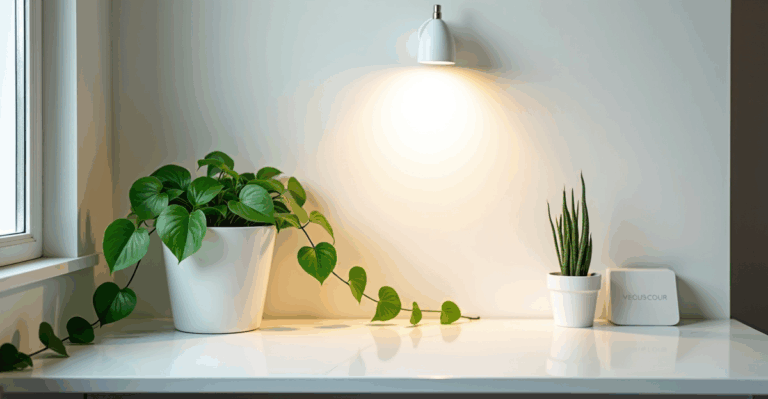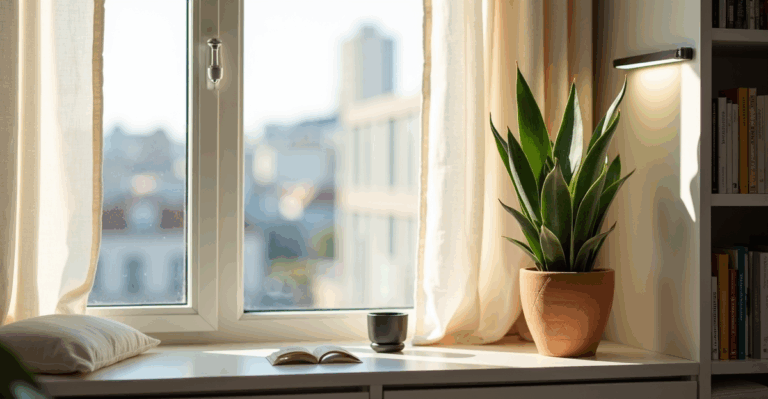The Balcony Humidity Hack That *Actually* Works (Without the Mold)
You’ve finally got your lush Calathea thriving on the balcony, but those delicate leaves are curling at the edges again. The morning sun hits just right, but the wind whipping off the street dries everything out faster than your morning coffee. You’ve tried the humidifier, but now the base of your ceramic pot is damp, and a fuzzy patch of mold is creeping up the side of your moss pole. Sound familiar? We’ve been there too. Adding humidity on a balcony feels like a losing battle against wind and sun, especially when the wrong humidity solution means swapping moldy plants for new ones. But here’s the real secret: it’s not about adding moisture—it’s about managing it so your plants thrive without becoming a mold magnet.
The key isn’t a single gadget. It’s about understanding how your balcony’s unique airflow and light patterns interact with your plants and your current setup. Most guides just say “use a humidifier,” which is useless on a breezy, open balcony and often makes mold worse. We’ve seen too many plants suffer from over-misting or poorly placed humidifiers creating stagnant, damp microclimates. Instead, we focus on creating dynamic humidity zones that move with the wind, not against it. It’s about working with your space, not fighting it.
Group Plants Strategically (Not Just “Put Them Together”)
The biggest mistake? Clumping plants haphazardly on a railing. That’s how mold happens—dense, stagnant air trapped between pots. Instead, strategically group plants based on their humidity needs and your balcony’s wind direction. Place high-humidity lovers like Calatheas or ferns downwind of your railing or a large trellis. The wind will carry moisture from the plants toward them, creating a natural humid zone. Place lower-humidity plants like snake plants or ZZs upwind where the breeze dries them out faster.
Real balcony example: On our east-facing balcony (gentle morning sun, afternoon breeze), we group our Calatheas near the back rail (downwind from the rail’s barrier) with a few air plants draped over the top. The wind carries moisture from the dense group toward the Calatheas, keeping them happy, while the ZZ on the sunny front rail stays drier. Crucially, we leave 2–3 inches of space between pots so air can circulate through the group, not just around it. No stagnant pockets = no mold.
Choose Planters That Breathe (Not Trap Moisture)
This is where most balcony setups fail. Clay or unglazed terra cotta looks great, but it wicks moisture out of the potting mix too aggressively on windy days, drying roots faster than you can water. Plastic or glazed ceramic retains moisture, leading to soggy soil and mold when humidity is high. The sweet spot? Lightweight, breathable planters with excellent drainage—which is why we love 3D-printed options for balcony life. They’re designed with subtle airflow channels in the base (not just a single hole), letting excess moisture evaporate before it pools. Plus, their consistent, smooth finish means no hidden crevices for mold to nest in—unlike textured stoneware or uneven ceramic.
Edge case: If you must use a dense pot (like a thick concrete cachepot), always use a liner with drainage holes inside it. Place the planter on a raised stand, not directly on a wet surface. But honestly? A well-designed 3D-printed planter eliminates this whole headache. You’ll never have to worry about mold lurking in a hidden crack.
Optimize Your Watering Routine (Not Just Add More Water)
Humidity isn’t about dumping more water on the soil—it’s about how you water. On a windy balcony, plants lose moisture from their leaves faster than they absorb it through roots. So, water more frequently but less deeply. Instead of soaking the soil until it drains, give a light misting to the leaves and a small amount to the soil (enough to feel slightly damp, not soggy). Check the top 1–2 inches of soil daily with your finger—if it feels dry, water. If it’s still cool and moist, wait. Overwatering here is the fastest path to mold, not humidity.
Balcony nuance: In summer, this might mean watering every morning. In winter, with less sun and wind, it could be every 3–4 days. Never water a plant that’s already sitting in damp soil. And remember: flush with distilled water once a month (especially if you use tap water) to prevent mineral buildup that can clog pores and worsen humidity issues.
Manage Light & Wind (Your Balcony’s Secret Humidity Controls)
Your balcony’s light and wind direction are huge humidity regulators. Bright, direct sun (like south-facing) evaporates moisture from soil and leaves fast, reducing humidity. Wind also dries things out. So, position humidity-loving plants where they get bright, indirect light (like behind a sheer curtain or under a pergola) and not directly in hot sun or wind blasts. On a west-facing balcony, a few feet back from the railing (in the shadow of a trellis) creates the perfect humid pocket.
Why this works: The shade reduces evaporation from leaves, while the slight barrier from the railing or trellis slows wind enough to let moisture build up. You’re not blocking light entirely—just creating a buffer zone. For windier balconies (like high-rises), add a temporary screen (like a bamboo roll or woven mat) on the windiest side only when humidity is low. Remove it when humidity rises to avoid trapping stagnant air.
Avoid the “Mold Trap” (The Critical Trade-Offs)
Let’s be real: some balconies are just too exposed. If your balcony gets constant direct sun and strong wind, even the best humidity hacks might struggle. In this case, prioritize plant choice over humidity. Choose plants that thrive in dry air: succulents, snake plants, or spider plants. Don’t force a Calathea to live in a desert. Also, never use misting as your primary humidity method—especially on leaves prone to fungus (like Peace Lilies). It creates a wet surface that invites pests or mold, not a humid air pocket.
Trade-off awareness: Using a humidifier is sometimes necessary, but only if you can place it away from direct wind and not in the same spot as a damp pot. For example, place it on a small table next to your plant group, not under it. And always, always keep the humidity monitor (a simple $10 digital one) on the balcony to check levels—aim for 50–60% for most humidity-loving plants. Anything above 70% with poor airflow is a mold invitation.
The Final Touch: Styling for Natural Humidity
Your balcony isn’t just functional—it’s a space you want to love. Grouping plants strategically creates visual harmony while boosting humidity. Place taller, leafier plants (like Monsteras) behind lower ones (like Pothos) to create a natural windbreak. Use shelves or hanging planters at different heights so air flows through the arrangement, not just over it. The goal? A living, breathing display that looks intentional, not just a collection of pots. This is where 3D-printed planters shine—they come in sleek, modern shapes that fit together seamlessly on a rail or shelf without looking cluttered. Their smooth, easy-clean surfaces mean you can style your space beautifully and keep it mold-free.
Real-world win: We use a mix of 3D-printed planters in our own balcony garden. The lightweight, tapered designs fit perfectly on a narrow rail without looking top-heavy. The subtle drainage channels keep soil from sitting wet, and the clean lines let the plants be the focus—not the container. It’s the simplest way to make humidity control look effortless.
We’ve tried every trick—from misting bottles to humidifier tents—but the real game-changer is working with your balcony’s natural rhythms. Group plants smartly, choose breathable containers that breathe, water with the wind, and position for the right light and airflow. It’s not magic; it’s just understanding how your space actually works. And when you’ve got a space that feels alive, not just green, that’s the real reward.
When you’re ready to grow your setup, explore our 3D-printed planters.
Key Takeaways
– Group humidity-loving plants downwind of a barrier to create natural moist pockets.
– Choose lightweight, well-draining planters (like 3D-printed) to avoid trapped moisture and mold.


